
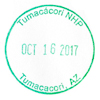 Tumacácori National Historical Park in southern Arizona preserves the sites of a handful of Spanish missions and settlements that were part of Spain’s advance into what is now the southwest United States. Named for the O’odham village it was built near, the main site at Tumacácori was preserved as a National Monument by Theodore Roosevelt in 1908 and expanded to a National Historical Park in 1990 when the nearby mission sites of Guevavi and Calabazas were added.
Tumacácori National Historical Park in southern Arizona preserves the sites of a handful of Spanish missions and settlements that were part of Spain’s advance into what is now the southwest United States. Named for the O’odham village it was built near, the main site at Tumacácori was preserved as a National Monument by Theodore Roosevelt in 1908 and expanded to a National Historical Park in 1990 when the nearby mission sites of Guevavi and Calabazas were added.
Visitor Rating (write your own review below)
ILNP Rating![]()
ILNP Park Review
Our Weather. Clear skies and upper 80s.
Our Visit. I visited Tumacácori in October as part of a trip to Tucson, Arizona
Overall Impression. Tumacácori (pronounced “too-mah-KAH-kor-ee”) is a little hidden gem within the National Park system. It’s remote enough that it’s not crowded yet is a quick drive from Tucson or Nogales. The museum, paths and buildings are some of the most pristinely kept in the NPS. While the public parts of the park can be easily visited in an hour, an avid historian could spend a day soaking in all the information and walking every path. It’s definitely worth a visit if you’re already near the area.
Visiting. While there are many sites within this park, the part open to visitors is the mission church and the ruins of the surrounding settlement that were built around the turn of the 19th century. While it looks like ruins because of the incomplete bell tower, this church was actually never finished before it was abandoned shortly after Mexico banished all Spanish-born residents in 1828. The church is the main attraction, but it’s in the centerpiece of a larger area of building ruins adjacent to the modern visitors center and museum.
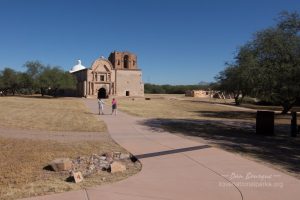
The church is the main attraction at Tumacácori, and wide, smooth paths make walking around the site easy
These main parts of the park can be visited in about an hour of walking. The key areas are reached via a series of level concrete sidewalks making for an easy walk. While programs are occasionally offered, most visitors take the self-guided tour with the aid of a booklet borrowed from the visitors center. Each section of the tour is well marked with a sign and number that corresponds to additional information in the booklet.
For a one-hour visit, I recommend taking about 15 minutes to tour the small but impressive museum which gives you a feel for the culture of the native O’odham people, the early Jesuit mission established by Father Kino, and the later Franciscan mission still standing. Learning about the intermingling of religion, national ambition and politics during the Spanish colonial era gives a good context for visiting the rest of the site. In the remaining time, walk the self-guided tour spending most of your time in and around the church.
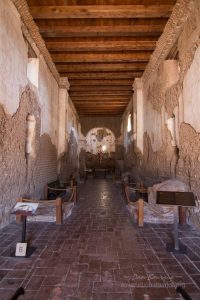
The interior of the church has a new roof but original walls. It’s lost most of its colorful artwork since it was built
If you have more time, you can hike down to the river to meet the Juan Bautista de Anza National Historic Trail. Juan Bautista de Anza led a group of Spanish settlers through Tumacácori on his way to found the first non-native settlements in the San Francisco Bay area. You can also check into a guided tour of one of the other sites in the NHP including the sites of the Guevavi, Calabazas and original Jesuit Tumacácori missions.
Suggestions. While this is a neat little park, it’s small scale means it’s best to combine a visit with other parks and attractions in the Tucson area. Because most of the park is outside, keep an eye on the temperatures and go when they’re more pleasant.
Nearby Towns Tumacácori , Nogales, Green Valley, Tucson (AZ)
Other Nearby Attractions Titan Missile Museum, Saguaro NP, Pima Air & Space Museum
Official NPS Website Tumacacori
- The visitors center has a garden featuring native plants and others that were cultivated in the settlement
- A life-size statue of Father Kino amidst the many exhibits of the small but excellent museum
- This model shows the mission at its peak in the early 1800s
- The church is the main attraction at Tumacácori, and wide, smooth paths make walking around the site easy
- The interior of the church has a new roof but original walls. It’s lost most of its colorful artwork since it was built
- This is the ruins of the storehouse. You can see where beams used to support a roof
- A good overview of Tumacácori looking west toward the mountains. This area has a real rugged beauty
- Looking at the church bell tower from the ruins of the convent
Write Your Own Review

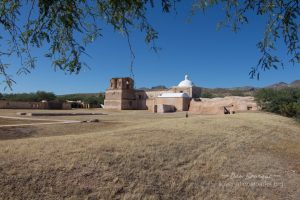
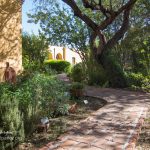
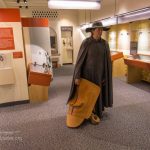
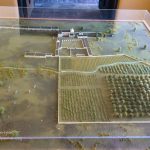
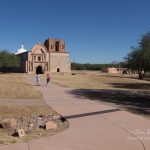
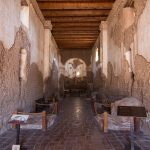
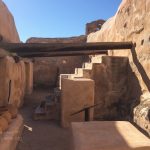
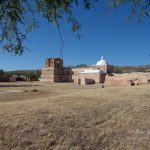
No Comments Yet